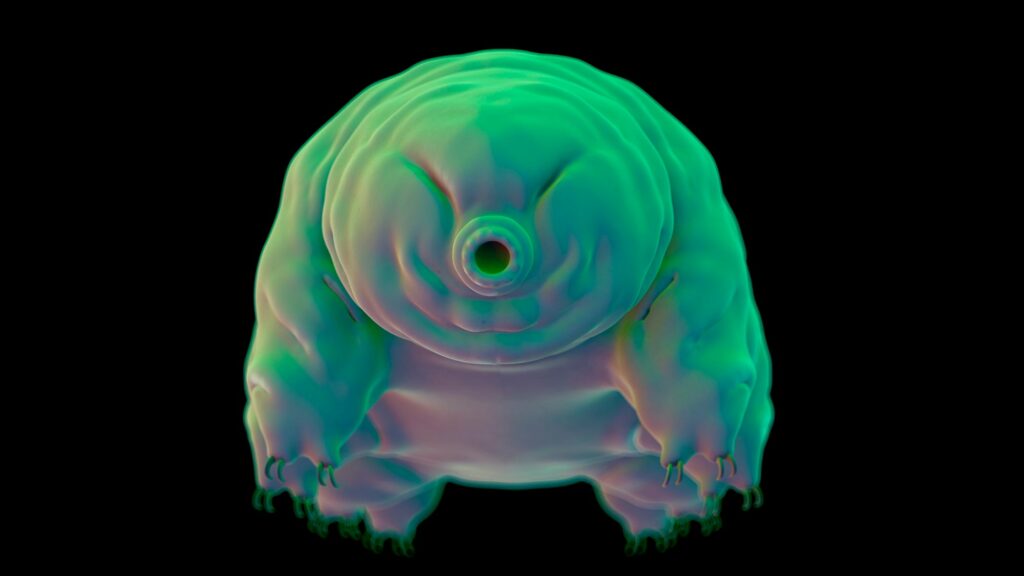Microscopic tardigrades have fascinated scientists for their incredible toughness since they were first discovered back in 1773. They can sense when it’s time to go dormant and enter a tun state under harsh conditions. Tardigrades can even withstand dangerous levels of radiation and a surprising mechanism in the DNA may be why. The process to repair DNA goes into overtime when exposed to the deadly radiation to fix the damaged DNA. The findings are described in a study published April 12 in the journal Current Biology.
“What we saw surprised us,” study co-author and University of North Carolina at Chapel Hill biologist Bob Goldstein said in a statement. “The tardigrades are doing something we hadn’t expected.”
Among the many dangers of excessive radiation exposure is its ability to damage DNA. In humans, the DNA damage from excessive radiation is linked to diseases including various cancers and cardiovascular disease. Tardigrade aka “water bears” can withstand an incredible amount of radiation. In 1963, researchers first discovered that they can survive 1,400 times more intense radiation than humans are known to live through. Now, scientists are getting a glimpse into how their bodies correct the radiation damage in DNA.
[Related: What you need to know about the tardigrade cannon.]
In this new study, a team at UNC Chapel Hill used lab methods developed over the past 25 years to identify the internal genetic mechanisms tardigrades use to survive radiation exposure. They looked at a species of tardigrade called Hypsibius exemplaris that are not immune to DNA damage from radiation. Instead, they can repair this type of extensive damage. When they are exposed to radiation, tardigrade cells harness the power of hundreds of genes to create new proteins used to repair DNA. These proteins then ramp up the level of DNA repair to levels study co-author and biologist Courtney Clark-Hachtel called “ridiculous.”
“These animals are mounting an incredible response to radiation, and that seems to be a secret to their extreme survival abilities,” Clark-Hachtel said in a statement. “What we are learning about how tardigrades overcome radiation stress can lead to new ideas about how we might try to protect other animals and microorganisms from damaging radiation.”
[Related: We’ve seen how tardigrades walk, and it’s mesmerizing.]
As the UNC-Chapel Hill scientists completed the work, a team from France found similar results in their experiments. Museum of Natural History Paris researchers Jean-Paul Concordet and Anne de Cian and their colleagues found that while gamma rays shattered the DNA of the tardigrades, it didn’t kill them. They also discovered a new tardigrade protein called TRD1 that protects DNA. When it is put into human cells, the protein seems to help them withstand the damage. Concordet told The New York Times that TRD1 may grab onto the chromosomes and keep them in their correct shape, even as the chromosome strands start to fray. Understanding proteins like these can potentially lead to new treatments for cancer and other medical disorders where DNA is damaged.
“Any tricks they use we might benefit from,” said Concordet. Concordet’s findings were published as a reviewed preprint in the journal eLife in January.
>>> Read full article>>>
Copyright for syndicated content belongs to the linked Source : Popular Science – https://www.popsci.com/science/tardigrades-water-bears-radiation/
